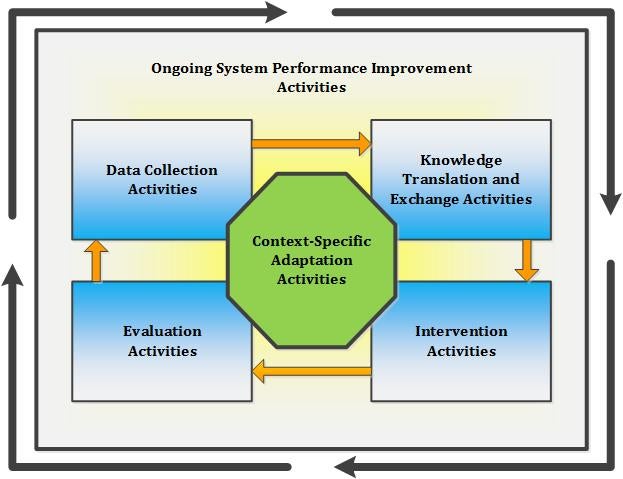The primary objective of the COMPASS System is to effectively guide and continually improve youth prevention research and practice. As a learning system, COMPASS has been purposefully designed to:
- strengthen the capacity required to plan, act, evaluate, and adapt strategies to advance youth health in multiple domains (e.g., obesity prevention, healthy diet and physical activity promotion, substance use prevention, tobacco control, bullying prevention)
- engage researchers in studies relevant to “real world” intervention by conducting studies that are designed to capitalize on natural experiments as a means for generating both evidence-based practice and practice-based evidence as interventions are mounted in different contexts and jurisdictions
- enable stakeholders in local health and education systems to plan, tailor, and evaluate local initiatives based on evidence
- strengthen our ability to understand and address health inequities among high-risk groups of youth (e.g., off-reserve Aboriginal youth, youth in low socioeconomic (SES) communities)
- expand our ability to understand how different social and physical environments shape youth health trajectories or impact the outcomes of different interventions over time (e.g., evaluating how different built environments can impact the success or failure of particular interventions)
- foster more primary prevention action and evidence-based practice through engaged partnerships between researchers and knowledge users. The COMPASS System is clearly focused on enabling the timely and robust generation of knowledge and evidence to advance youth health, by building the capacity to integrate research, evaluation, policy, and practice within the Canadian (and international) prevention system
The conceptual framework guiding the COMPASS System is adapted from earlier research and leadership with the School Health Action Planning Evaluation system (SHAPES) model1,2, but made relevant to (a) longitudinal data systems, (b) incorporating data on the program, policy and built environment surrounding youth, and (c) fostering knowledge exchange to promote contextually appropriate intervention action within schools.

Figure 1- Conceptual model of the COMPASS System.
References
Leatherdale, S.T. 2012. Evaluating school-based tobacco control programs and policies: an opportunity gained and many opportunities lost. Canadian Journal of Program Evaluation, 24:91-108.
Leatherdale, S.T., Manske, S., Wong, S., Cameron, R. 2009. Integrating research, policy and practice in school-based physical activity prevention programming: The School Health Action, Planning and Evaluation System (SHAPES) Physical Activity Module. Health Promotion Practice, 10, 254-261.